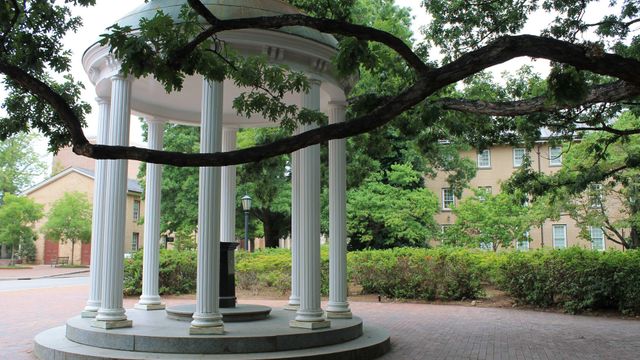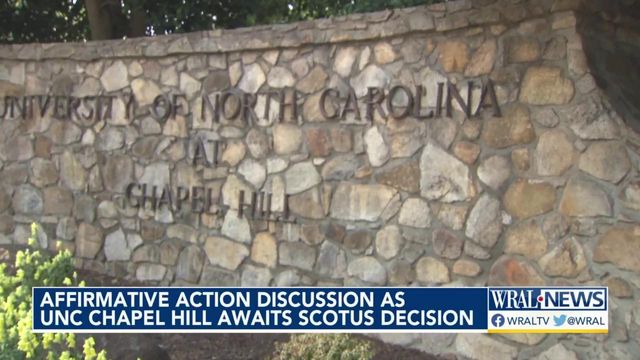Affirmative action: UNC lawsuit could change college admissions nationwide. What you need to know.
A lawsuit against the University of North Carolina at Chapel Hill has the potential to end affirmative action nationwide by the end of this month.
The U.S. Supreme Court recently heard two related lawsuits, one against UNC and another against Harvard University, that challenge the constitutionality of affirmative action in public and private universities. Its rulings are due any day; the court’s term ends in June.
A ruling in favor of the universities would protect affirmative action, allowing schools nationwide to continue considering race as one of many factors that go into whether a student should be admitted. If the court rules against UNC and Harvard, it would stop affirmative action in schools — and could open the door for future lawsuits to challenge its use in hiring, too.
Here’s a breakdown of what colleges can (and can’t) do with affirmative action, as well as the background of how these cases came about.
How affirmative action has affected UNC
North Carolina’s flagship university remains highly unrepresentative of the state as a whole, despite decades of affirmative action policies.
In this year’s freshman class at UNC, 87% of students are either white or Asian, despite those groups being roughly two-thirds of the overall state population. Just 8% of all UNC students are Black, despite one-fourth of the state identifying as Black or multiracial.
Black students, as well as faculty members, have recently criticized the university for not doing enough to support minorities on campus.
But the lawsuit, filed by the group Student for Fair Admission, says there are too many Black and Hispanic students being admitted, at the expense of white and Asian students with higher test scores. The lawsuit particularly focuses on Asian students, who make up 3% of North Carolina’s population and 22% of UNC students — a number the lawsuit says should be even higher.
“An entire industry exists to help them appear ‘less Asian’ on their college applications; and the unlevel playing field contributes to their unusually high levels of anxiety, depression, and suicide,” the lawsuit claims.
UNC’s academics remain at a high level: According to the university, most students scored between a 1340 and 1500 on the SAT, out of 1600 possible points. Nearly every student ranked in the top 20% of their high school class for grade point average, and most were in their high school’s top 10 total students.
Are colleges forced to use affirmative action?
No.
The Supreme Court has ruled for decades that there is a compelling government interest in favor of affirmative action. But that just means colleges can use it if they want. They’re not required to.
“Harvard and UNC have each concluded that a diverse student body benefits the entire university community by promoting academic debate and inquiry, exposing all members of the community to a broader set of ideas, and enhancing respect for different perspectives,” the North Carolina and Massachusetts chapters of the ACLU wrote in a legal brief urging the Supreme Court to allow affirmative action to continue.
Kenny Xu, a conservative anti-affirmative action activist who leads the group Color Us United, said in an interview Tuesday that he agrees the country needs to help minority students get better educations. It’s just that doing so in college is too late, he said.
“We do need to help Black children specifically, but I don't think college is the place to do that,” he said. “Because at that point, you've already reached your cognitive ability basically. What we need to do is, we need to reform our K-12 education system."
How does affirmative action work?
Universities can’t use race alone as the only reason to accept or deny a student. That’s illegal. But race can be one of several factors in addition to academics.
Other factors can include a prospective student’s legacy status (whether their parents went to the school), extracurricular activities, leadership roles, musical talents, athletic abilities and more.
For instance, if two students have similar extracurricular activities and grades, a university might use race, or their legacy status, as a factor to admit one but not the other, if the students are otherwise borderline cases for admission.
Usually, race — or any other factor — doesn’t make a huge difference. Most colleges and universities across the country accept just about everyone who applies. The average acceptance rate nationwide was 70% for the 2021-22 school year, according to U.S. News & World Report.
But racial considerations can have increased weight at the nation’s most selective universities, where prospective students and their parents can also be quite passionate about rejections.
That’s why UNC and Harvard are the two schools sued in these cases. UNC rejects three of every four applicants, and Harvard is the most selective school in the country, taking only 5% of those who apply. The high rejection rates gave critics plenty of data to hone in on why certain students were or weren’t accepted.
Precedent and a shifting court
The Supreme Court upheld affirmative action as recently as 2016 — in a lawsuit brought by the same conservative activist who’s also behind these two new challenges.
But the court has shifted to the right since then, with former Republican President Donald Trump nominating three new justices to the nine-member Supreme Court. And legal observers widely expect the court to now reverse decades of legal precedent, dating back to the Civil Rights Movement in the 1960s, and end affirmative action.
Most schools around the country, from the K-12 level to universities, remained segregated for years after the 1954 ruling in Brown vs. Board of Education. And data shows majority-white public schools still, to this day, tend to get significantly more funding than majority-Black schools. So affirmative action has been seen as a way of addressing America’s long history of both overt and systemic racism.
But it’s unpopular — among the nation as a whole, but especially among conservatives, who dominate the Supreme Court with a 6-3 majority.
In a speech in Chapel Hill Tuesday, racial justice advocate Rev. Al Sharpton Jr. called for expanding the Supreme Court to blunt the power of the conservative justices who have in recent years overturned a number of key legal precedents on voting rights, women’s rights and more.
The son of Rev. Martin Luther King Jr. joined him in Chapel Hill, saying America has still not realized his father’s vision of racial equity — and could be backsliding, especially if policies like affirmative action are overturned.
“While one would ask ‘Is that dream fulfilled?,’ very quickly we can easily say, ‘Obviously not,’” Martin Luther King III said. “We are not at the vicinity of what he would’ve achieved 60 years later. We have got to work far more diligently to realize the dream.”
What does public opinion say?
Affirmative action is unpopular, the Pew Research Center found in 2019 and again in 2022. The more recent poll found 71% of Americans think race shouldn’t be a factor in college admissions — including 79% of white people and 59% of Black people.
Among Black communities, the poll found, there is more widespread support for using a different metric, which many colleges do use: Whether the applicant is the first in their family to go to college.
Nearly 60% of Black people support that first-generation student factor being used to give applicants a leg up, as do similar majorities of Hispanic and Asian people, Pew found. Most white people oppose it.
How common is affirmative action?
A few individual states have banned affirmative action, including the biggest state in the country.
In California — home to more Asian residents than the next five states combined — the public university system banned affirmative action in the 1990s. But most states do still allow affirmative action in college admissions.
What do California education leaders say?
Last year the president of the University of California System, and every individual school’s chancellor, all signed onto a legal brief for the recent UNC and Harvard cases — in favor of affirmative action.
California’s 20-year experiment in banning it, they wrote, has been a failure.
“Despite its extensive efforts, UC struggles to enroll a student body that is sufficiently racially diverse to attain the educational benefits of diversity,” they wrote. “The shortfall is especially apparent at UC’s most selective campuses, where African American, Native American, and Latinx students are underrepresented and widely report struggling with feelings of racial isolation.”













